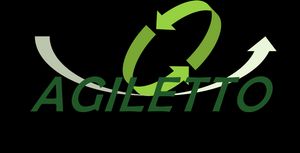Mini-Myth - Velocity = Productivity = Great Team
Once upon a sprint, two teams delivered. Team Alpha boasted a burndown chart as sharp as a cliff—ten user stories, neatly packaged and pushed to production. Team Beta, meanwhile, completed just one.
Leadership applauded Alpha. “High velocity!” they said. “A high-performing team!”
But when customers spoke, the truth emerged: Alpha’s work changed nothing. Features went unused, complaints persisted, and churn ticked up. Beta’s lone delivery? A redesigned signup flow that halved onboarding friction, boosted conversions by 27%, and delighted users.
The myth was clear: Velocity is not productivity.

Velocity tracks speed. Productivity reflects impact.
Reflection
We fall for the velocity trap because it’s visible, measurable, and comforting. It gives the illusion of control. But like judging a novel by its page count, it’s the wrong proxy.
True productivity comes from outcomes—customer impact, business value, meaningful change. Not the number of stories completed, but the value of the problems solved.
Yet velocity often becomes a target. Contracts are written around it. Progress is reported through it. Teams optimize for it. And dysfunction follows.
Evidence Box: Why Velocity Falls Short (And What To Use Instead)
Recent research from Google, GitHub, and leading universities confirms what many agile practitioners already sense: no single metric captures software team productivity. Frameworks like SPACE and DORA offer multidimensional perspectives that go beyond speed.
- Team morale and satisfaction
- Delivery speed and reliability
- Quality of outcomes
- Communication and flow
The takeaway? Fast doesn’t mean effective. Productivity is contextual, holistic, and evolving—just like the teams that create real impact.
- SPACEs Framework – Nicole Forsgren, Margaret-Anne Storey et al., 2021 (ACM Queue)
- DORA Metrics – DevOps Research & Assessment
So let’s ask better questions:
- What changed for the user?
- What was the measurable outcome?
- Are we solving meaningful problems?
- Or just moving tickets?
If the answers don’t live in the velocity chart, maybe we’re looking in the wrong place.
How to Measure Impact
That’s the hard part. Before we can measure what matters, we have to know what matters.
And that’s where most teams stumble. They don’t understand their users. They haven’t seen the problem in context. They don’t know what drives revenue—or what drives cost, especially in public sector and enterprise environments.
And if you don’t know what matters, it’s impossible to measure what matters. So we fall back on what’s easy to count. Story points. Code coverage. Deployment speed. And we convince ourselves we’re measuring reality.
But product thinking isn’t about counting. It’s about caring. It’s about closing the loop—from problem definition to outcome. From need to solution. From seed to bread.
Or as we say in Swedish when we think we’re being funny: from axe to limp—a poetic but wildly off direct translation of "från ax till limpa."
Last updated May 27, 2025
